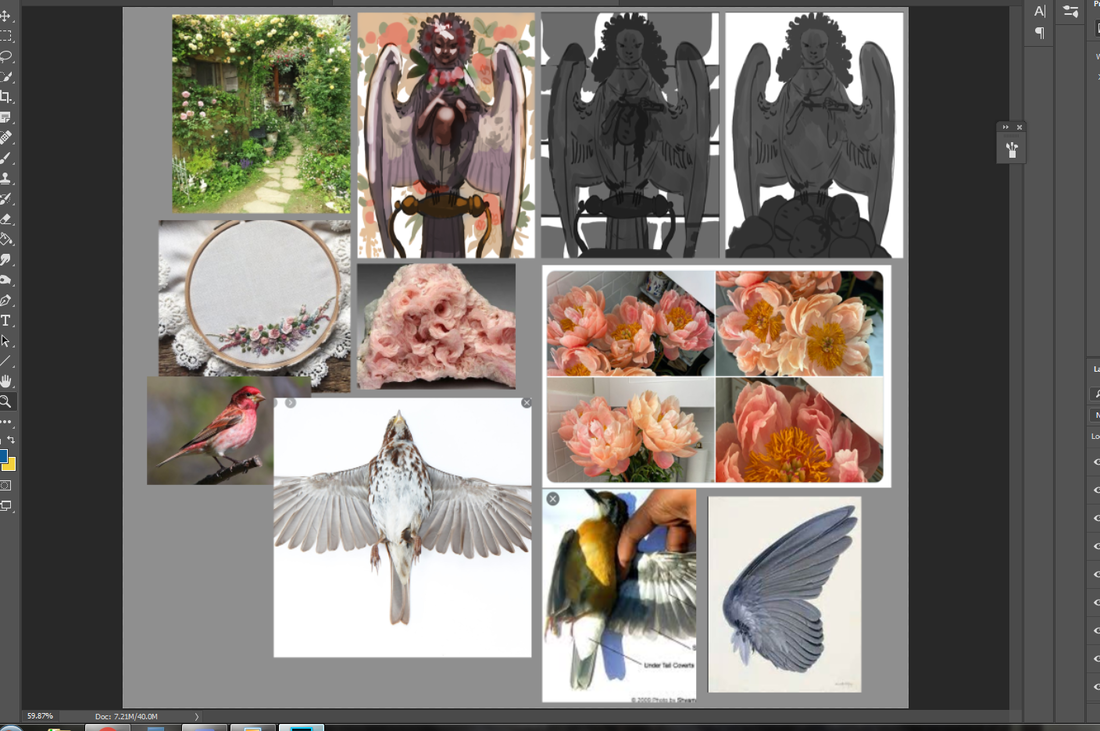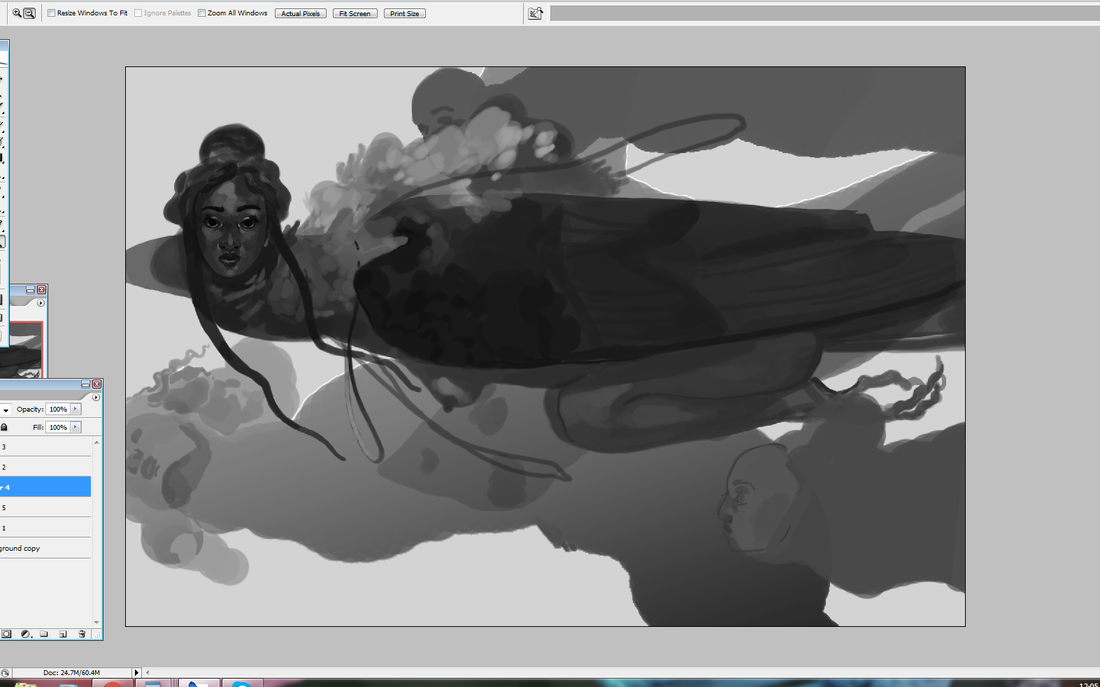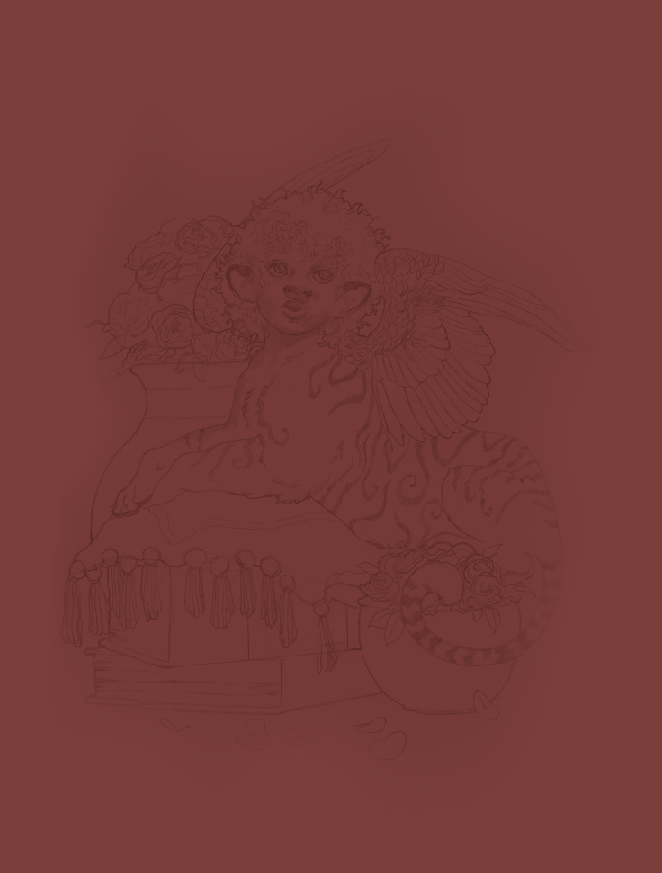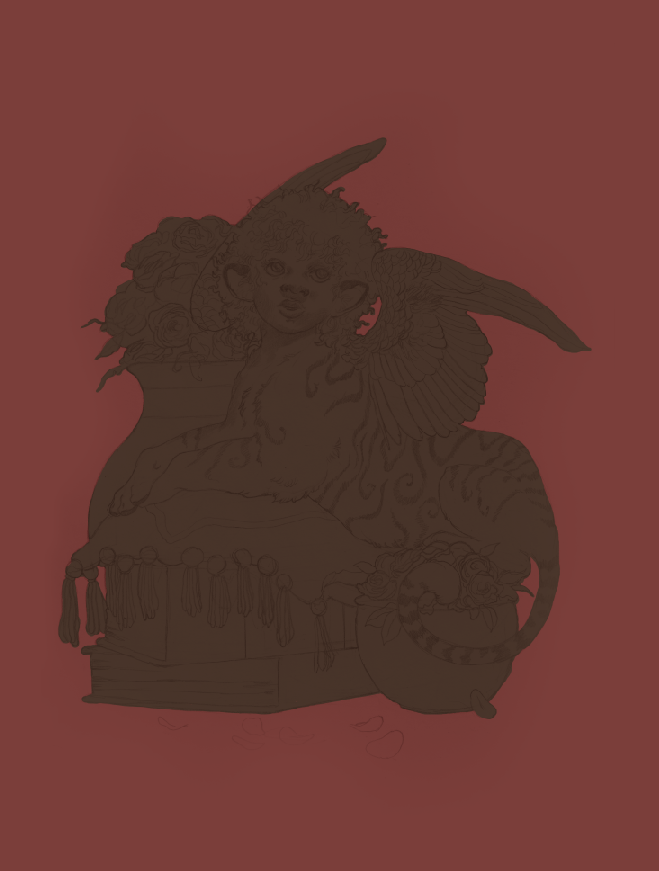|
You just have to speak things into existence. I was contacted by Zero Issue Beer not too long ago -- a Canadian craft brewery -- and was asked if I was interested in doing an illustration for their new seasonal beer line-up. What a coincidence 2020 was the year I wanted to get into packaging design and illustration, particularly for beverages! Even better, the proceeds are going to Sankofa Arts & Music Foundation for black Canadian youth. As you can likely imagine, I was sold twenty times over. I have a short interview that will be appearing on their site here. For now? I'm going to share the creative process behind this piece, from the rough beginning stages to the inspiration behind it all. I'll share some tips I've learned about packaging design, too, for any of you who want to branch out your portfolio. Spoiler: there are harpies.
0 Comments
Been a while since I've done one of these! Indulgent art has always held a high priority for me. Why bother painting or drawing things I'm not invested in? Not to mention I need to show what I want to get hired for, so...kill two birds with one stone. This piece, however, was peak indulgence. Like, a dollop of whipped cream on top of whipped cream indulgence. You have a harpy. You have flowers. You have a ton of colors. Hell, there are even the mildest of vaporwave vibes (pink + blue surrealism) that snuck in without me realizing. Expect to see more of that. This year has been an absolute trainwreck and it's barely halfway over. Soaking in the subjects and styles I love to the nth degree is as self-care as it gets. As a side-note, I'm going to be keeping these progress posts a little brief from now on so I don't repeat myself. I mean, you know I love color. The part where I start phasing out the sketch and start rendering is orgasmic. Yadda yadda. I'll focus more on the unique challenges of each piece and what, exactly, was going on in my mind when making it. It's time to get indulgent.
Sometimes you need to start over fresh. There's no shame in it. Why waste effort picking away at something you could just re-do in half the time? Other times, though, you'll need to bite the bullet and push through. Knowing which one of these to commit to is part of being a productive artist. I've talked about it before and I'll repeat until I'm blue in the face. It's a gamechanger. Now that that's out of the way...let me start this by saying I wanted to drop this piece like a cheap vase. Even worse? This was one of my favorite sketches in my sketch batch. Talk about artistic whiplash. It didn't help I was winging the color scheme and many of the supporting details (a habit I've developed since color theory is one of my strongest skills). I had a vague idea I wanted blue and gold, that I wanted everything fancy and dream-like...and that was about it. For once, my guesswork backfired and made me fudge around more than normal. This doesn't happen often -- I've winged crazier pieces than this -- but it cost me several hours that could've been saved if I fleshed out the draft stages better. This was a good reminder of how badly a piece can backfire if you don't have the basics down. I thought of throwing my hands up in the air and outright moving on to another sketch, but something about this one told me to keep going. 'Make it work' is a phrase made famous from Project Runway and one I've adopted. It's a saying that tells you to work with your mistakes and find a way out of the hedgemaze you've built for yourself. I might just have to do a post on all my personal quotes one of these days. (If you're curious about other pieces I've done, check out my recent post on the progress of 'Yasar'.)
I have so many characters. Jesus Christ. It's to the point that even doing art of other characters I don't paint very often feels excessive. Like I'm choosing a favorite child. As it stands, I've only drawn Yasar a few times, despite the fact he's a prominent supporting character in a big (and very old) story of mine. I'd go into greater detail about his personality and history, but I'm viciously protective of my intellectual property. Maybe someday when I actually commit this story to a game or a book. I like to separate character art into three categories: simple, complex and illustrative. The first is exactly what it says on the tin, with no background or any supporting elements whatsoever. The middle adds a little more, such as an item or animal. The latter is an illustration in all but name, with the focus still heavily on the character themselves. I take a lot of inspiration from fashion magazines for that last one, since they tend to showcase models in all sorts of environments that play second-fiddle to the subject. This character art is somewhere between a simple and complex, as the giant gilded egg fills out the space without any additional interaction. Funny enough, even after extensive thumbnailing (see below), I still didn't have any idea what I was going to put behind him. Just...something. Something to round out that space! Throwing in a big fancy egg while painting ended up giving me an idea for one of his powers, since he's an illusionist that depends on sleight-of-hand and a jack-of-all-trades approach. ...Don't do what I did, though. Figure everything out in the draft stage. It'll save you so much more trouble.
I figure now's a good time to talk about why I've learned not to make New Year's Resolutions. I understand the appeal. The desire to just...rinse off all the bad, keep the good and glide into the future with a lighter spirit. The socially acceptable ritual of drinking like crazy and waking up with a New Year hangover? I certainly feel the urge in my bones, and it's not even Thanksgiving yet! I won't be doing it, though. I haven't for several years, in fact! I've learned New Year's resolutions tend to be, at best, dramatic declarations with little (if any) long-term payoff. They feel great in the moment, but once it comes down to keeping pace with your ambitions? Resolutions are a recipe for failure that shows in every deadline missed, personal promise delayed and mediocre result gained. So I skip it...and instead focus on building good habits instead. This is a subtle, yet hugely life-changing mentality that I've picked up from B2B writing/content marketing spaces. It makes sense, since the nature of that skillset is about crafting progress in bite-sized increments. Whether or not you're a freelancer, I highly recommend checking out Ed Gandia and BlackFreelance. They have several wonderful pieces that explore the benefits of shifting your mentality with smaller gestures, rather than going for a 'cold turkey' approach that has you falling back on old habits. Good habits are just as hard to break as bad ones. For example, I brush, floss and rinse every single night, and missing just one night? It has me all out of sorts. I extend this same minimalist logic to other things, working backwards from the goal. Instead of just saying I want to lose a certain amount of pounds, I instead signed up at a local gym with my roommate for two sessions per week (as well as fewer sweets). Instead of just saying I want to wake up earlier, I instead push myself to go to bed an hour sooner. When it comes to art? Well, I want to improve my production, quality and outreach. But what do I have to do to get there...and will it be small enough to incorporate into my everyday life without a drastic overhaul? For now...I'm focusing on traditional sketches. They're the foundation of most of the work I do and take the most effort from me. All those big goals of a shinier portfolio and fleshed-out projects? Those come later.
It's that time again. The autumn leaves are falling, our fingertips are freezing and the Inktober event is in full swing. ...Ish. I made a poll at the beginning of the month asking for thoughts on Inktober, the popular October art tradition: the consensus was non-committal, with the majority either being wishy-washy on the idea or outright refusing. Is it any surprise? Making art is already enough of a process without churning out daily pieces, which are disruptive by nature due to being free work sandwiched in-between jobs, school and life obligations. This response is on top of countless counterposts I've seen just browsing my feed. For health-related reasons or not having enough time, I'm really happy to see artists prioritizing other things, to be honest. Burnout is a pretty serious issue without adding FOMO to the mix. Burnout is so serious, in fact, it can literally make you sick. It's an easy trap to fall into as a freelancer, as well, since you're in the position of having to dictate your own hours and find your own work. Getting said work? Often means creating free work in the hopes of someday being paid for it. More than once I've found myself working ridiculously long days without a full break. I've even come down with illnesses that don't usually affect my age group (which I'll talk about in a later post). Does that mean I'm against the concept of Inktober or any variant thereof? Not at all! Daily art exercises have their time and place: 1. They're a smart way to nip overthinking in the bud (how many pieces lie unfinished because of too much prep work?). 2. They supplement portfolios with smaller pieces (great for blogging and/or Patreons). 3. They're great practice and, with the right mindset, a ton of fun. If you're feeling guilty for not participating, however...that's when you're deprioritizing artistic growth in favor of FOMO: a fluff goal for shallow social media attention that doesn't amount to anything substantial. Art deserves better than that, right?
Sometimes you don't know how a piece is going to turn out. It's the eternal conundrum: do you keep going with a sketch that's quite not working...or start over? Then there are the times you don't know what the hell you're doing at all. I've gotten better at resolving this over the years. At this point I can tell when something isn't going to go where I want it to, no matter how hard I try. One common sign of this is when I rework a certain area of a painting over and over and over. Other times I'll notice something is wrong when there is an abnormally huge gap between the preliminary stages and the final sketch. Art is a conversation. It'll go in places you don't always expect and, just like any dialogue, you should take warning signs at face value. Sometimes, though...unpredictability is your friend. Sometimes you're not sure where your art is going...and that's the best part. The pieces are laid before you, the ideas and the mood are there, but you haven't arranged them into anything resembling sense yet. This is, honestly, one of my favorite ways to paint. This illustration below originally started out as a bunch of ovals and circles. No thumbnail. No rough draft or references. Just a mess of blobs I shuffled around until they gradually formed an image in my head. This tends to be what I do when I'm having a hard time creating work and want to push myself. As is my wont, I go for a half-human creature. What can I say? I know what I like.
This is a piece of character art I did back in 2017, and one I'm still deeply proud of. It's a direction/technique I want to pick up again moving forward. I also figure it's time to talk about traditional and digital art, a juxtaposition that tends to get a lot of ire from gatekeeper blowhards. In my previous posts I talked about how I like to combine a little traditional art with digital, even though working 100% digital is often faster. There's a certain texture to pencil sketches that translates very well to digital painting. I took a wonderful general painting class back in high school -- alongside mentoring under an acrylic painting professor from a local university -- that helped set a strong foundation for my work today. Contrary to what some say (yes, sometimes to my face), traditional art is not better -- or more real -- than digital art. There's a pervasive -- and self-serving -- myth that a thing being harder automatically makes it better. Now, you won't get me saying traditional art doesn't have a steeper learning curve than digital. That is absolutely true. There are simply more steps involved. You have to prep the canvas (or wood or cardboard or-), create or transfer the sketch, mix your colors, protect your colors throughout several sessions, clean your brushes, preserve the final work, frame, package...yes. That is absolutely more work. But more work doesn't automatically mean better work. I've seen traditional art that's hardly moved me. I've seen digital art that's captured my imagination. This purity myth is steeped in gatekeeping attitudes that equate more difficulties with success...usually by those who don't face quite as many of those difficulties (such as having studio space or money for supplies) in the first place. I will not, however, create more myths around digital art. Digital art is easier than traditional. It's still not easy. If you're not familiar with layering, masking, color theory, light and shadow, design, mixing up your references...? Going digital is not suddenly going to fix that, no more than buying a fancy set of Copic markers and Bristol board will transform you into an overnight art master. In that regard...these two art forms are honestly not all that different. Digital art today is a brilliant tool to create art while saving space and money. It's painting without the mess. It's less costly. It's more flexible, especially if you're like me and constantly come up with new ideas on the fly. Already having a traditional art foundation just gives you a head start, as it makes the transition far smoother and gives your work a look that's not easily replicated. Doing a traditional sketch filled in with digital colors gives me the best of both worlds: the tight, grainy detail of pencil with the rich, sumptuous colors of a few Photoshop sessions.
|
AuthorHere I post WIPs, sketches, speedpaints, thumbnails and anything else thrown into the veritable stew of artistic process. Archives
January 2021
Categories
All
|
ServicesBook Covers
Illustration Character Art Portraits Packaging Art Concept Art |
AboutCommercial illustrator and designer currently available for short-term and long-term freelance work.
|
© COPYRIGHT 2015. ALL RIGHTS RESERVED.
|




 RSS Feed
RSS Feed